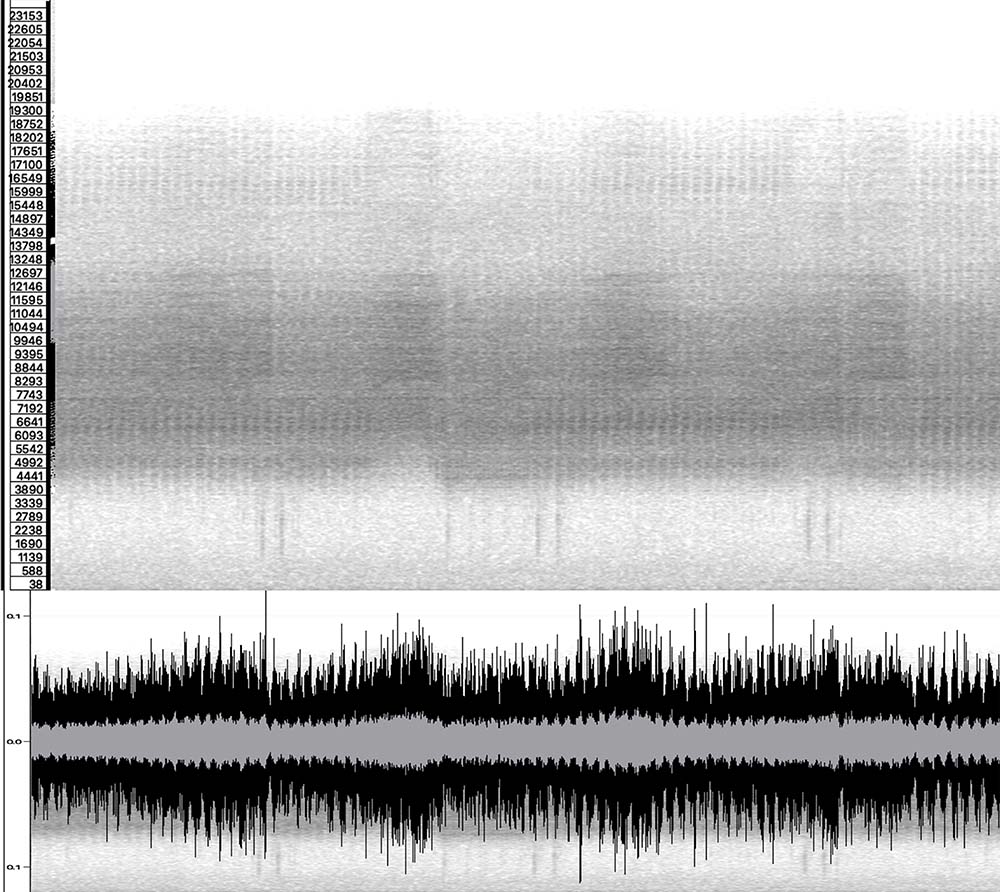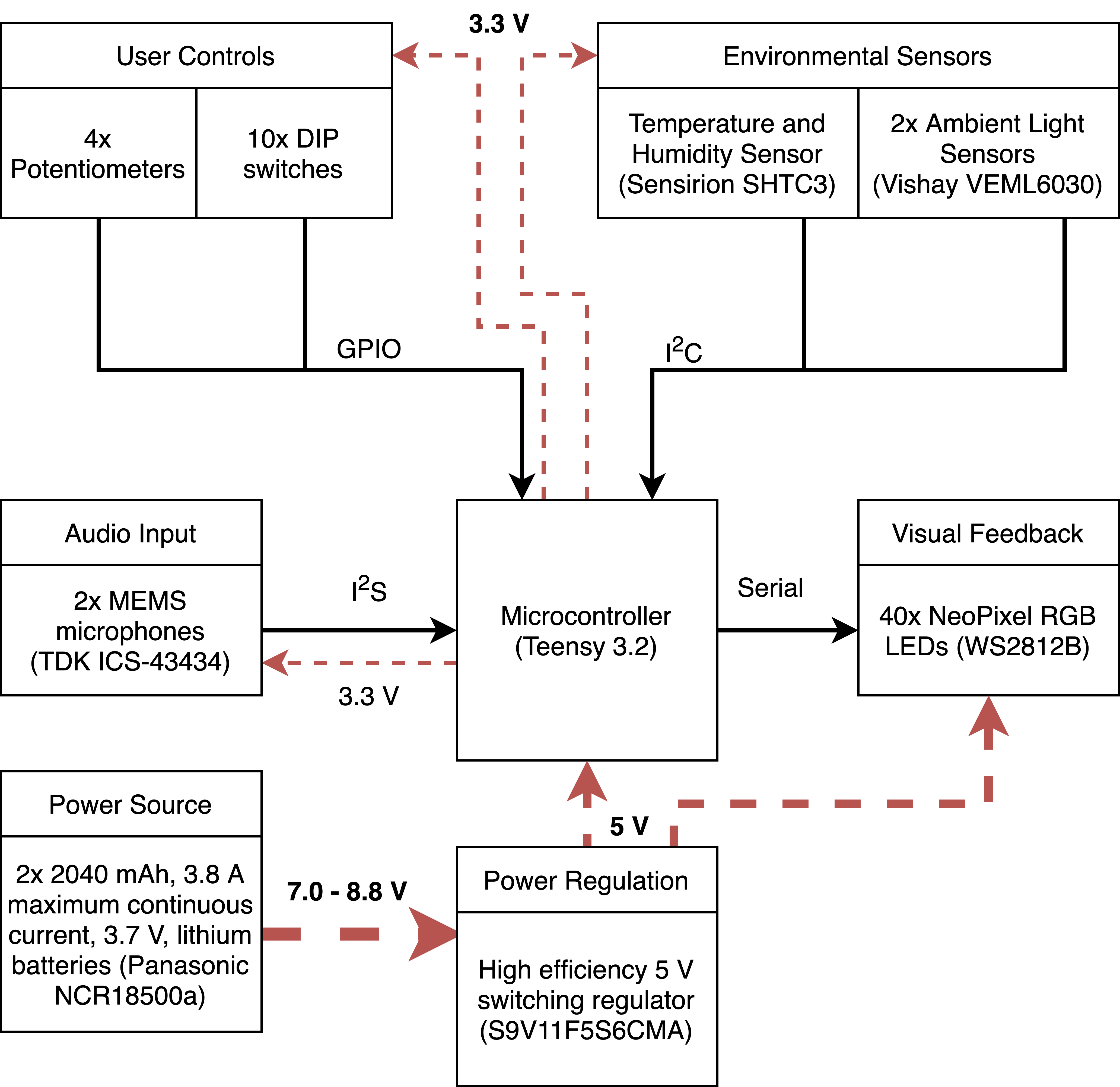Speculātor
Speculātors
Speculātor is a small, battery-powered, environmentally reactive soundscape augmentation artifact that provides audio-reactive LED feedback. To survive in outdoor, fully-exposed locations, Speculātor uses data collected from a combined temperature and humidity sensor to shutdown the system when the enclosure is too hot inside or compromised by liquid ingress. Lux readings collected from ambient light sensors are leveraged to maximize the artifact’s visual feedback effectiveness by dynamically scaling feedback brightness according to the lighting conditions.

Within installations, small groups of Speculātors are distributed throughout a natural environment, either hung from environmental features such as tree branches or placed resting on the ground. After situating themselves within the new habitat, the units activate their LEDs and begin to provide real-time feedback according to their individual interpretations of the sonic environment.
Cicada Installations
For the initial case study, the system’s ability to selectively react to specific targeted sounds in the environment is investigated. Amphisalta zealandica (common name chorus cicada) dominates the summer soundscape within New Zealand’s Wellington region and is the first target test-case. The impressive loudness of these insect’s vocalizations, their prevalence during the summer months, their production of both percussive clicks and continuous drones, combined with a perceived under-appreciation of the intricate music-like qualities present in brood vocalizations, provided a perfect opportunity to test the Speculātor artifacts in-situ.
Pop-up Installation Exhibit Methedology
The general location where any given cicada installation occurs, the specific locations where Speculātor units are placed within the exhibit area, as well as the install, exhibit, and uninstall logistics are approached with a “pop-up” installation methodology. This methodology has been developed to conduct in-situ soundscape augmentation installations and can be thought of as generating “soundscape-specific” artworks. For these installations, the predetermined physical installation location is malleable as each installation’s final location is determined on the day of install according to the location’s sonic qualities. In the cicada installations, the target soundscape is dominated by the sounds of the chorus cicada, produced by a large brood. During an installation, the units share the same listening goals but develop different interpretations of the soundscape based on their perspectives.
Targeted Feedback

The chorus cicada produces two sounds which the installations target. The first is a high-pitched “song” vocalization, seen in , which occurs regularly within broods and sonically dominates the sonic environment between 4000 — 13000 Hz. The second targeted sound is a broad-spectrum clicking, which results from cicada forcefully slamming their wings against the surfaces they are attached to and is most apparent between 1 — 3 kHz.
To generate feedback that corresponds to both the cicada click and cicada song, the mixed microphone input signal is split into two channels, which are processed independently to best target either the song or click component of cicada vocalizations. To maximize feedback responsiveness while making it easier for Speculātors to be dropped into soundscapes that exhibit different amplitudes and frequency contents, the audio features go through an automated scaling process. When a new minimum value for a feature is calculated the program decreases its currently recorded minimum value by five percent of the difference between the new and old value and the minimum also undergoes an automatic decay process which increases its value by ten percent of the difference between the minimum and maximum value every few minutes. This process is inverted for the maximum values recorded so that new maximum values proportionally increase the currently recorded maximum and the decay process decreases the threshold automatically. The firmware uses the maximum and minimum recorded values to scale to incoming feature to a value between 0.0 and 1.0 where 0.0 is the lowest recorded value and 1.0 is the highest. This automatic relative scaling and threshold decay algorithm is inspired by the signal-processing technique of adaptive whitening and allows the firmware to more easily adapt to differing soundscapes without manual intervention.
